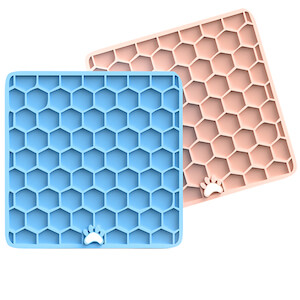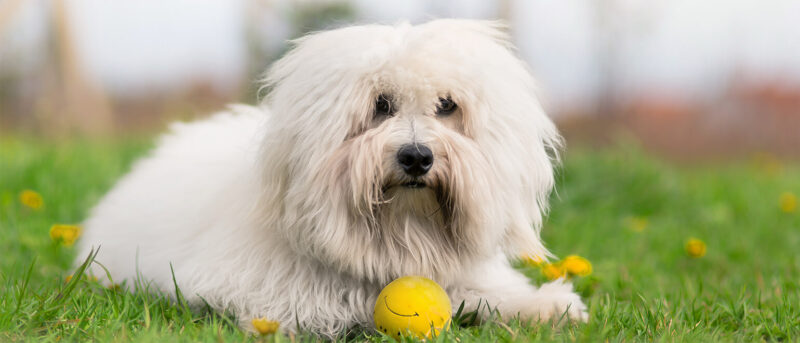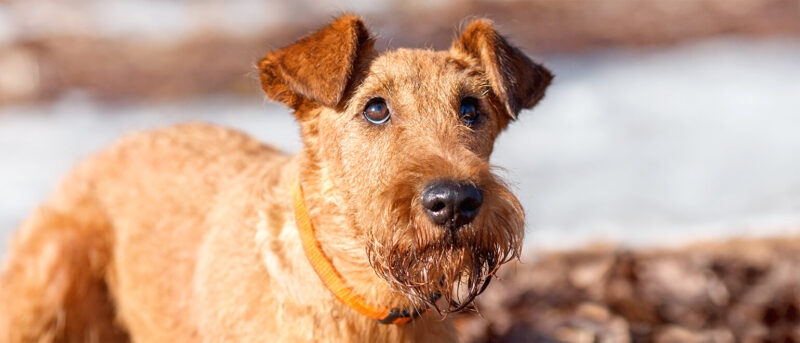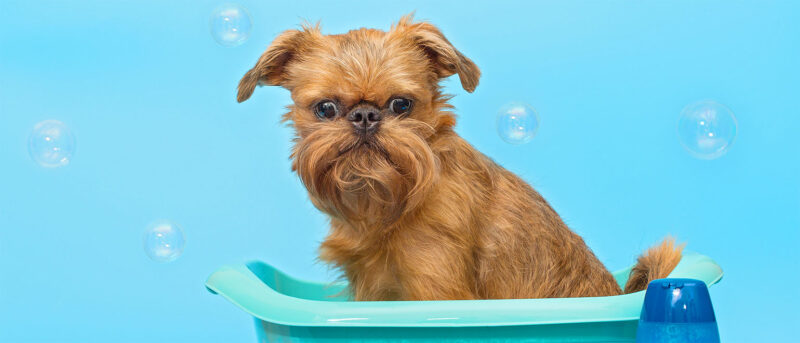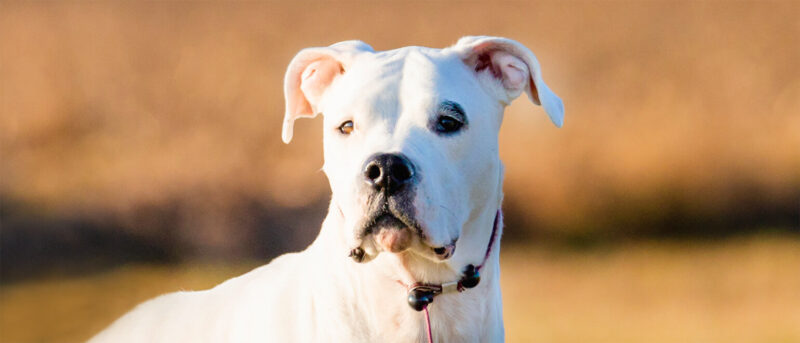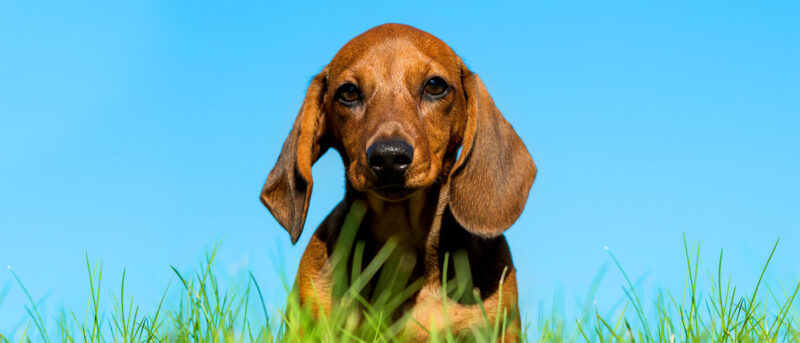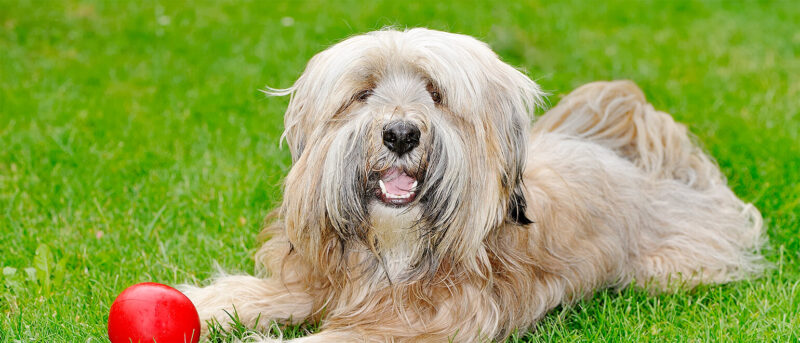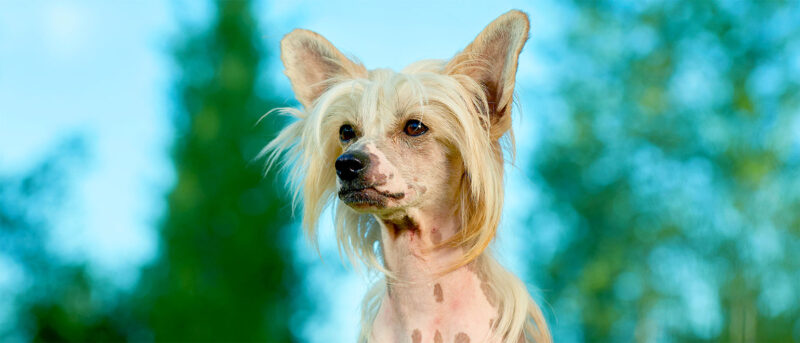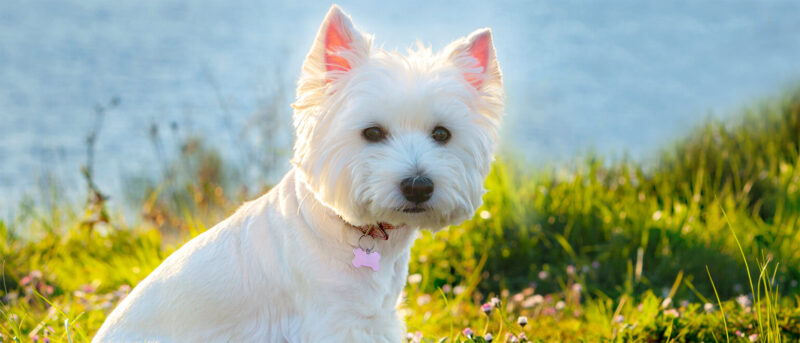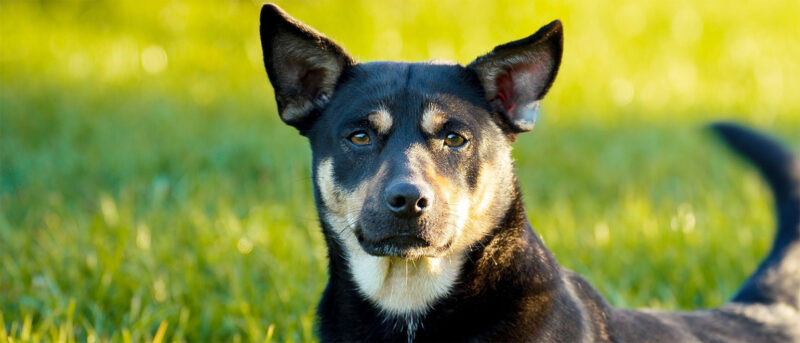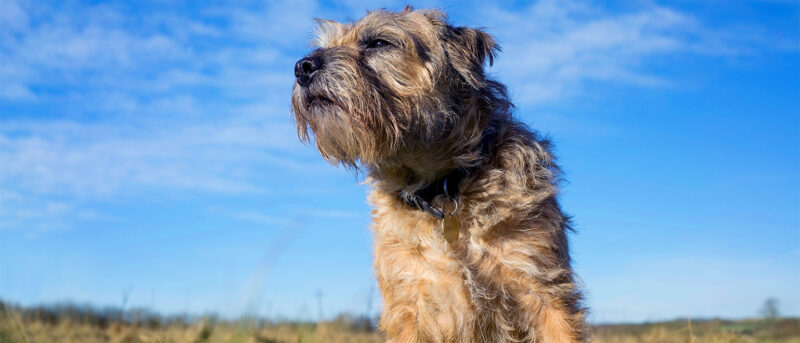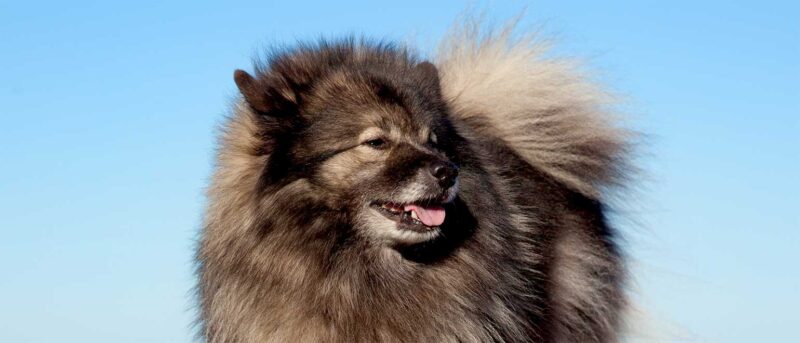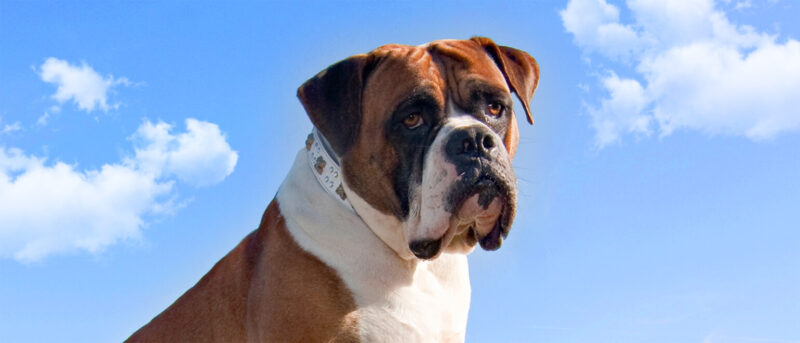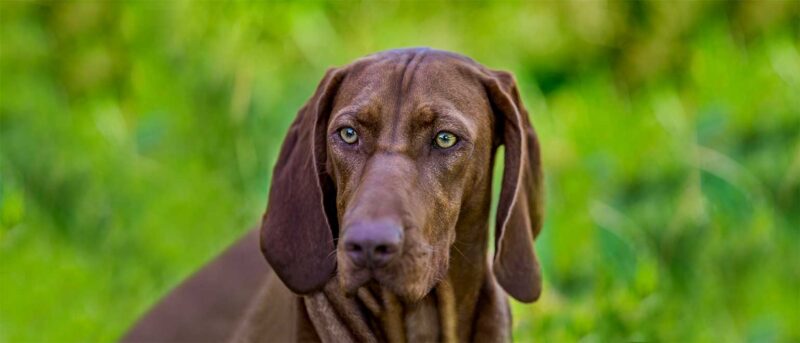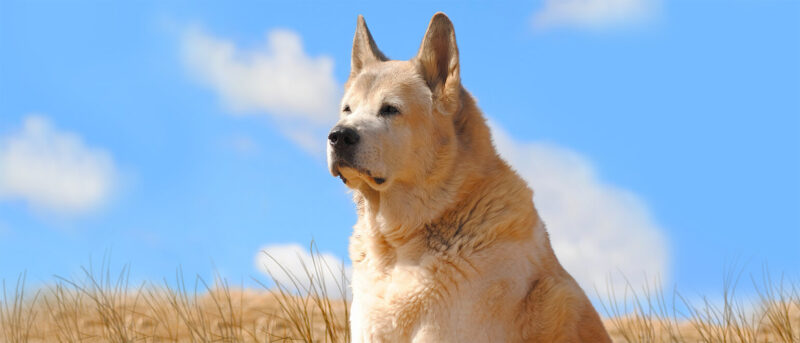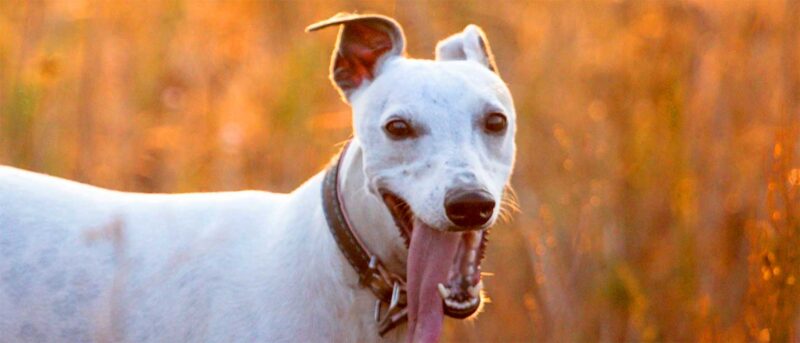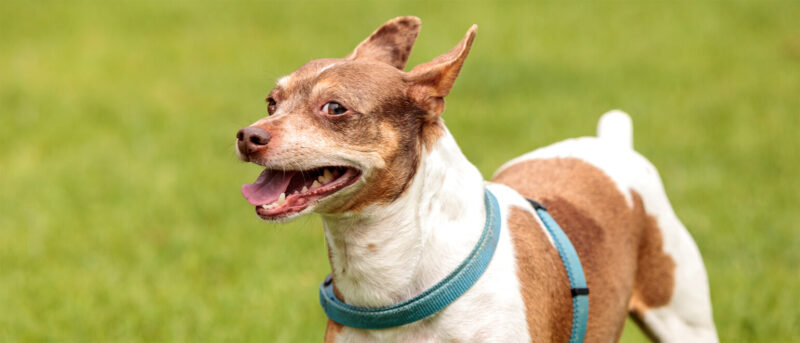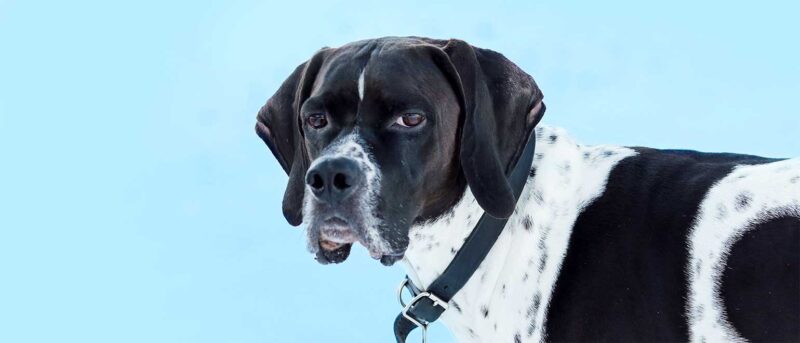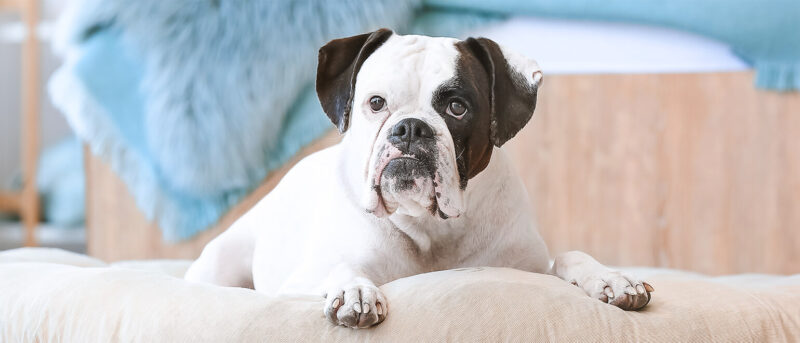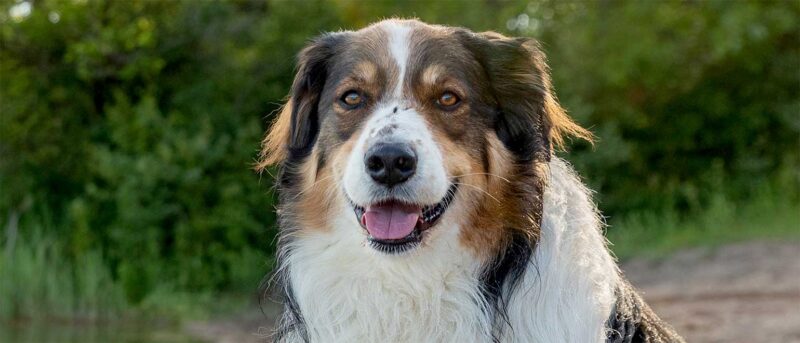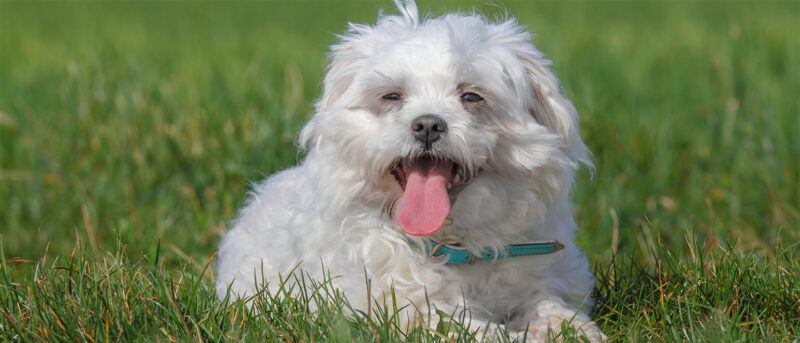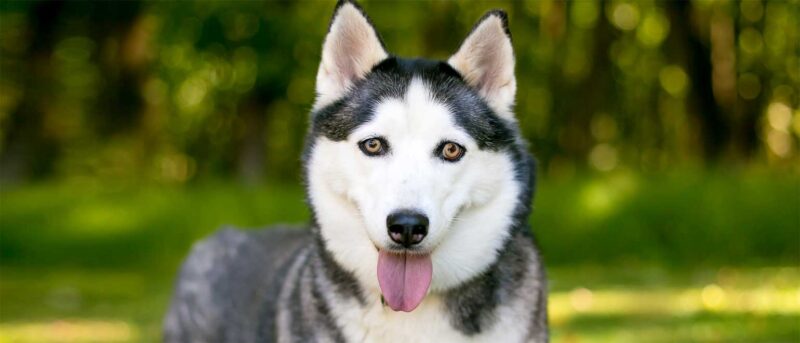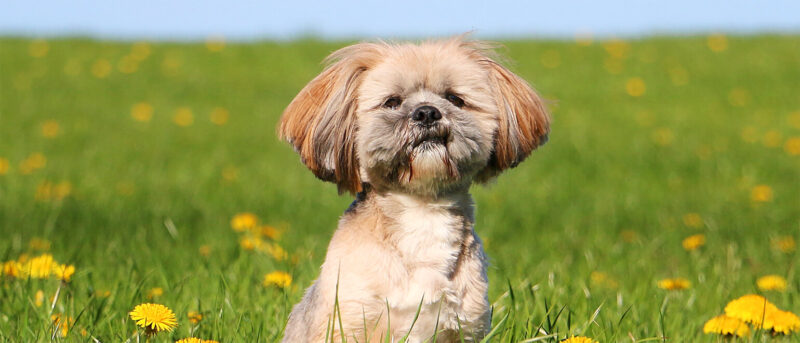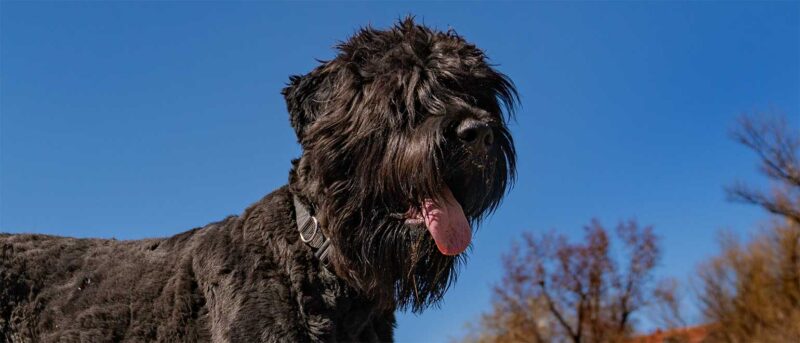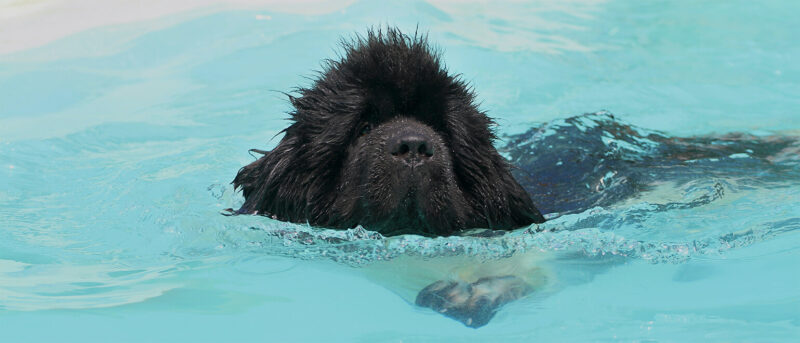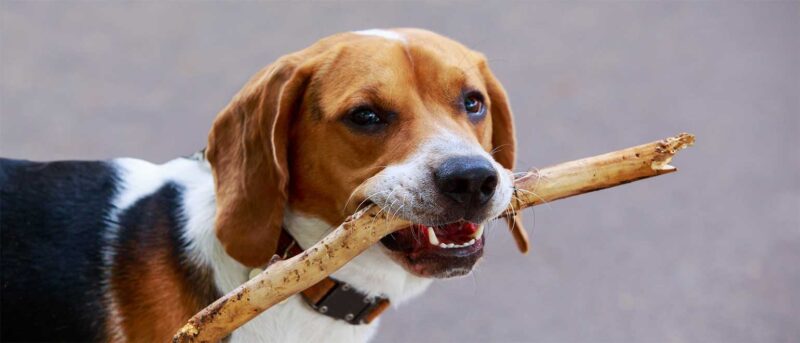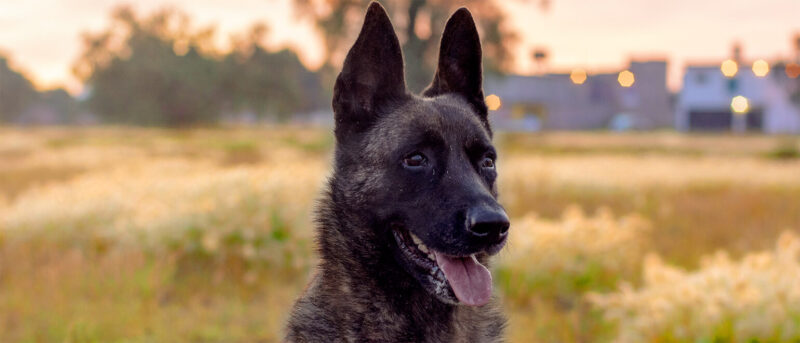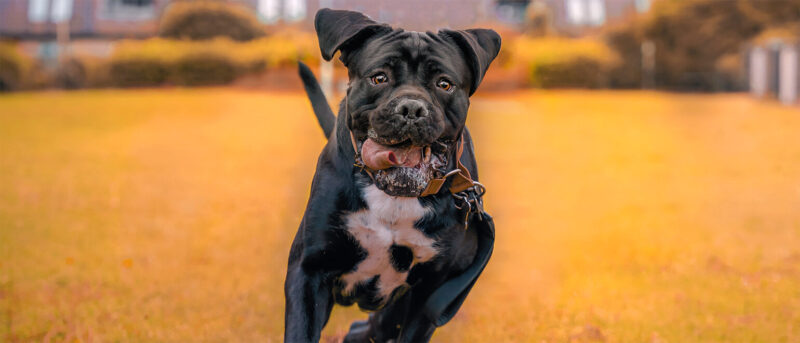Bullmastiff Dog Breed: Big Facts About One of the Largest Canines
Large, intimidating, and powerfully built, the Bullmastiff is one impressive dog. Despite their imposing appearance, they are gentle giants who love goofing off with their families. With their mellow and easy-going nature, they make wonderful additions to families, particularly those with playful kids. If you can deal with their larger-than-life size, you’ll find the Bullmastiff […]
Large, intimidating, and powerfully built, the Bullmastiff is one impressive dog. Despite their imposing appearance, they are gentle giants who love goofing off with their families. With their mellow and easy-going nature, they make wonderful additions to families, particularly those with playful kids. If you can deal with their larger-than-life size, you’ll find the Bullmastiff to be a loyal and loving companion.
Bullmastiff Dog Breed Characteristics
The Bullmastiff’s imposing size and muscular build commands attention and instills fear in intruders. With their broad heads, dark brown eyes, and deep muzzles, this dog is known for its strikingly intelligent and bold expression. These dogs mean business and when they’re on alert, you can see an intense and daring gaze in their eyes.
Despite their initial ‘aggressive’ appearance, Bullmastiffs quickly reveal their true nature as affectionate and playful companions when around family and friendly individuals. Their furry faces soften with joyful expressions, often scrunching up with happiness. Their high-set, V-shaped ears exhibit a range of expressions—from floppy and relaxed when they’re hanging out to perked up and alert when they’re in guard-dog mode.
Despite their colossal size, Bullmastiffs possess a surprisingly lean and agile physique. Their body weight is mostly muscle, which gives these heavy-boned hounds remarkable strength. Bred originally to be the ultimate guard dog, Bullmastiffs are always ready to spring into action and protect their loved ones when needed.
Bullmastiff Dog Breed Size
Male Bullmastiffs are generally larger than females, though the difference is not significant. On average, males stand between 25 to 27 inches at the shoulder and weigh approximately 110 to 130 pounds. Females, on the other hand, typically measure between 24 to 26 inches at the shoulder and weigh around 100 to 120 pounds.
Bullmastiff puppies undergo rapid growth, quickly growing into goofy, gigantic adults. Despite their imposing size as adult dogs, they adapt surprisingly well to apartment living, provided they still have ample opportunities for outdoor exercise.
Bullmastiff Dog Breed Personality
With their history of being bred as guard dogs, Bullmastiffs are naturally protective of both their families and their territory. They rely on their imposing appearance and impressive size to deter potential intruders, aiming to instill fear rather than resorting to actual physical harm.
Despite their lineage as working guard dogs, Bullmastiffs are renowned for their warm and affectionate nature within the family. While they may exhibit caution around strangers and bark loudly or chase any perceived threats, they are incredibly friendly and playful dogs.
Bullmastiffs can be naturally outgoing and brave. They also display a remarkably adventurous spirit from time to time, but mostly, all they want to do is cuddle up on the couch with their family.
Despite their guarding instincts, Bullmastiffs are super sweet and eager to please, constantly vying for their family’s love and attention.
This breed is an excellent option for those who spend their days at an office. Bullmastiffs typically handle being alone during the workday quite well. After eagerly awaiting your return home, they will shower you with affection the minute you step in the door. Known for their penchant for lounging, Bullmastiffs often enjoy laying on top of their owners on the couch. These big babies are lap dogs at heart, despite their large frame.
With this dog, you will always need to be on the lookout for slobber (especially if they’re lying on top of you). The Bullmastiff is a big-time drooler. It is advised that pet owners keep towels around the house and in the car so you can quickly clean up their saliva mess as needed.
Bullmastiff Dog Breed Exercise
While the Bullmastiff may appear athletic, they are not made for endurance activities. Daily moderate exercise, such as brisk walks and engaging in games like fetch, is more than enough to maintain their health and well-being.
Due to their rapid growth as puppies, it’s best to regulate the physical activity levels of Bullmastiffs to encourage steady growth. While they may have abundant energy during their younger years, allowing them to excessively exert themselves can increase the risk of injury. During this stage of development, these dogs can be quite prone to injuring themselves.
As Bullmastiffs mature, their activity levels can vary, some become couch potatoes, and others retain their energetic nature. Regardless of their natural energy levels, it’s important to encourage them to be active for about an hour each day. Most Bullmastiffs remain sedentary when left alone, so it’s best to add an exercise routine to your day if you leave them alone regularly.
That being said, don’t plan on making your Bullmastiff your running partner. They much prefer going on walks and patrolling their territory. If you have a backyard, make sure to invest in a secure fence as the Bullmastiff will chase after any animals or strangers they perceive as a threat. While their endurance ability is lacking, they certainly can sprint!
Bullmastiff Dog Breed Training
Obedience training and socialization are needed for Bullmastiff puppies. It’s highly recommended to enroll them in classes as soon as you bring them home. Establishing a relationship based on rules and respect is critical. Starting training early ensures that they develop into well-behaved and well-adjusted adult dogs.
When welcoming a Bullmastiff puppy into your home, it’s essential to begin training early, as they grow rapidly into large, unruly, and powerful adults. The general rule is if you don’t want them engaging in certain behaviors as adults, it’s important to discourage those behaviors while they are still puppies.
Setting boundaries early on with your Bullmastiff puppy is key. If you prefer not to share your couch with a 130-pound adult dog, it’s important to discourage couch time when they are still little pups. Consistency, firmness, and kindness are essential in establishing rules and a happy home. Bullmastiffs thrive on both affection and structure, so providing both ensures a healthy relationship and good behavior.
With proper socialization and obedience training during puppyhood, Bullmastiffs can excel at following commands. They demonstrate excellent tracking abilities and surprising agility for their size. Since the late 19th century, Bullmastiffs have thrived in the show ring with their ability to perform tricks on command.
Bullmastiff Dog Breed History
Before their time in the show ring, Bullmastiffs were intentionally bred to be vigilant and intimidating guard dogs. In the 1800s, poaching on aristocratic game preserves posed a significant challenge in the English countryside. Despite the severe penalty of facing the gallows, poachers persisted in their illegal activities.
Frustrated from having to keep watch through the night and confront armed poachers, gamekeepers soon recognized the need for a canine guardian to help combat poaching. They then embarked on a breeding program, crossing Mastiffs and Bulldogs, prioritizing the dogs’ instincts and capabilities over their physical appearance.
With time, gamekeepers achieved the desired balance, resulting in a breed composed of approximately 60% Mastiff and 40% Bulldog. The resulting Bullmastiff possessed a combination of strength, intuition, and courage. The dogs exhibited remarkable speed, capable of chasing and tackling poachers even in the darkest of nights. Gamekeepers taught these dogs to detain rather than maul their targets.
The Bullmastiff earned the nickname “The Gamekeeper’s Night Dog” for their role in protecting estates. They possessed a menacing appearance, intimidating enough to deter or apprehend intruders, yet they also displayed a gentle demeanor. Bullmastiffs swiftly endeared themselves to everyone on the farm, earning both love and respect for their loyalty and protective instincts.
As the Bullmastiff breed grew in popularity, competition among gamekeepers and their dogs broke out. Each gamekeeper boasted that their Bullmastiff was the strongest, fastest, and bravest dog. Eventually, to prove their claims, they began entering their Bullmastiffs into agility competitions, showcasing the breed’s exceptional abilities.
After proving their remarkable abilities in the show ring, the Kennel Club (UK) officially registered the Bullmastiff as an official breed in 1924. Americans quickly began to import Bullmastiffs to the States and in 1933 the American Kennel Club officially registered the breed.
Bullmastiff Dog Breed Health Problems
Sadly, Bullmastiffs are predisposed to several genetic conditions that can significantly affect their well-being. Among these common health concerns are bloat, hip and elbow dysplasia, and hypothyroidism. Bullmastiffs typically have a lifespan ranging from seven to 10 years.
Bloat
To quote the American Kennel Club (AKC), “Bloat, also known as Gastric Dilatation-Volvulus (GDV) complex, is a medical and surgical emergency”. This life-threatening condition typically occurs after a dog eats. It is fatal for around 30% of the canines it afflicts, with large breeds like Mastiffs being particularly susceptible.
Bloat occurs when a dog’s stomach traps air and twists inside the abdomen, leading to a blockage of blood flow in the midsection. Veterinarians have yet to determine the sequence of events: whether the twisting induces air entrapment, or vice versa. Regardless, this condition can put the dog into a state of shock.
Then, the pancreas deprived of oxygen releases highly toxic hormones capable of stopping a dog’s heart. This condition is profoundly devastating as it manifests suddenly and violently. As a Bullmastiff owner, it’s of the utmost importance that you recognize the symptoms of bloat so you rush them to the emergency vet right away.
Signs of bloat in dogs include:
- Retching
- Restlessness
- Whimpering when the abdomen is touched
- Noticeable abdominal swelling
- Excessive salivation
Hip and Elbow Dysplasia
Hip dysplasia is a hereditary condition that results in the malformation of the hip joint during a dog’s development. This misalignment results in painful bone-on-bone friction, limiting the dog’s movement. Similarly, elbow dysplasia affects the connection between the radius, ulna, and humerus, leading to comparable discomfort and mobility limitations.
The signs of elbow and hip dysplasia are extremely similar. The symptoms include:
- Wobbliness
- Difficulty standing up from lying down
- Reluctance/inability to climb stairs/jump onto the couch
- Joint swelling
- Leg weakness
The American Bullmastiff Association (ABA) and American Kennel Club recommended that you have your Bullmastiff screened for both hip dysplasia and elbow dysplasia from a very young age. Both of these conditions can be treated effectively in most cases with non-steroidal anti-inflammatory drugs.
Beneficial health supplements like canine-grade CBD oil, glucosamine, and omega-3 fatty acids may also help your dog, as can modifying their diet and exercise. These conditions, when left untreated, can develop into arthritis.
Hypothyroidism
Hypothyroidism is a medical condition characterized by dangerously low activity of the thyroid gland, resulting in a slowdown of a dog’s metabolism. As noted by the VCA Hospitals, it typically stems from lymphocytic thyroiditis, an immune-related disease, or idiopathic thyroid gland atrophy, a condition where normal thyroid tissue is replaced by fat.
Common symptoms of Hypothyroidism:
- Weight gain that doesn’t match food intake
- High cholesterol
- Darkening pigmentation
- Intolerance to cold weather
- Dry, dull, excessively shedding hair
- Lethargy
Less common signs:
- Thickening facial skin
- Lack of coordination
- Leg lameness
Entropion
The Spruce Pets explains that “Entropion in dogs is an ocular condition that causes the eyelids to roll inward”. Unfortunately, Bullmastiffs are predisposed to suffer from entropion, a condition that causes lashes and hairs around the eye to irritate the corneas.
Severe adult entropion can be addressed through a surgical intervention that reshapes the eyelids. For Bullmastiff puppies with entropion, sutures can be placed to help reposition the eyelids. In certain cases, this treatment facilitates the natural outgrowth of entropion in Bullmastiff puppies.
Common signs of entropion are:
- Eye redness
- Excessive blinking
- Squinting
- Obvious irritation
- Excessive tearing
- Swelling around eyes
How to Care for a Bullmastiff
Bullmastiffs are known for their mellow demeanor, low energy levels, and affectionate nature, coupled with a protective instinct. They are sensitive and loving companions, despite their imposing appearance. Establishing a strong bond with your Bullmastiff is essential. They thrive with owners who are dedicated to providing them with the attention and care they require.
Known in the 1800s as “The Gamekeeper’s Night Dog”, Bullmastiffs now thrive as indoor dogs. While they do relish their outdoor time, they should not be left unattended outside for extended periods. It’s essential to have a tall, sturdy fence around your yard to keep them safely contained during outdoor playtime.
Due to their serene disposition and gentle nature, Bullmastiffs excel as therapy dogs. They have a remarkable ability to perceive human emotions, even without formal training. After picking up on their loved one’s distress, they will quickly come to their side and offer comfort.
Nutrition and Feeding for a Bullmastiff
Even though most adult Bullmastiffs weigh close to a whopping 120 pounds, they don’t require a ton of food. An adult Bullmastiff typically requires between three to four cups of top-quality, protein-rich food divided into two daily meals. It’s important not to leave food out for them to snack on or self-feed throughout the day.
Splitting your Bullmastiff’s food into two separate meals helps prevent them from ingesting too much at once, which is crucial for avoiding digestive issues like bloat. It’s also a good idea to limit their water intake during meal times. However, the greatest precaution in avoiding bloat is to refrain from exercise, including walks, immediately after eating.
During puppyhood, it’s recommended to feed a Bullmastiff puppy several small meals throughout the day to support their rapid growth and development. Keeping them lean is essential, particularly during this stage, to ensure healthy growth.
You can easily gauge your Bullmastiff’s weight without a scale. Just stand above them and see if there’s a noticeable waist when you look down. Next, gently place your hands on their back with the heels of your palms facing inward and the fingers spread out and downward. You should be able to feel their rib cage without it being visually prominent.
Coat Color And Grooming
While Bullmastiffs may leave a wet trail of drool, you can rest assured that their coat is relatively low-maintenance. Their short and dense hair typically results in minimal shedding, with their shedding cycle mostly occurring seasonally. However, if you observe an unusually high amount of shedding, it could be a sign that there’s a health issue related to their diet and nutrition.
Even though a Bullmastiff’s coat is tangle-free, it’s still beneficial to brush them two to three times a week. This grooming routine helps remove dirt and loose hair, preventing potential skin infections. Skin issues and irritation can lead to hair loss and unhealthy or dull hair growth.
For short-coated breeds like the Bullmastiff, baths should only be given as needed, usually around every month to a month and a half. However, if they get dirty or start to smell from outdoor play, it’s best to bathe them immediately.
Bullmastiffs typically come in standard coat colors such as fawn, red, and brindle, which is a dark, almost tiger-striped-like pattern. Fawn-coated Bullmastiffs often have a distinctive black mask pattern on their muzzle. Historically, gamekeepers favored brindle-coated Bullmastiffs as their dark color pattern provided effective camouflage at night.
Bullmastiffs require regular nail trims every one to two months to keep their nails healthy. To prevent plaque buildup and maintain excellent oral health, brush their teeth two to three times a week. Additionally, it’s essential to inspect their ears regularly for excessive wax buildup or signs of mites.
Children And Other Pets
Undeniably, Bullmastiffs make a fantastic family dog and interact well with children. Their gentle, friendly, and loving disposition means they’re likely to shower kids with affection—prepare for lots of licks! However, given their size and strength, it’s essential to supervise interactions with children, as Bullmastiffs can unintentionally knock over small kids during play.
Bullmastiffs typically do best with dogs of the opposite sex, but with proper socialization, they can learn to get along well with almost any dog. They rarely exhibit aggression towards unfamiliar dogs unless they perceive them as a threat to their family.
Believe it or not, Bullmastiffs can coexist fairly well with bold and curious cats. However, they may become uneasy around timid cats and may chase them if they sense fear. If you’re considering adopting a Bullmastiff and already have other pets, it’s important to take into account their personalities to ensure a harmonious home.
Rescue Groups
Adopting a Bullmastiff rescue can be more challenging than bringing home a puppy. Their past is often unknown, leaving you unaware of their sensitivities or medical history. Many rescues are surrendered due to health issues, which can result in significant expenses and time commitment for their care.
If you’re ready to take on the responsibility of caring for an older, potentially unsocialized, untrained, or unwell Bullmastiff, there are several rescue groups dedicated to the breed. It’s always encouraged to adopt rather than shop for these dogs. While purchasing a new puppy may seem appealing, there are many dogs in shelters eagerly awaiting loving homes.
One of these groups is The American Bullmastiff Association (AMA) which is the American Kennel Club affiliated Bullmastiff rescue group. To ensure the health and safety of their rescues, they are very strict with their adoption policies.
For our neighbors to the North, there is the Bullmastiff Rescue of Canada which focuses on the rehabilitation of the Bullmastiff breed.
Breed Organizations
The foremost organization for this breed in the United States is The American Bullmastiff Association (AMA) which is the official Bullmastiff organization of the American Kennel Club. This wonderful organization is committed to educating people about the breed and upholding ethical breeding standards.
The oldest and most notable Bullmastiff organization in the Pacific Northwest region is The Cascade Northwest Bullmastiff Club (CNBC). They work hard to educate the public on the Bullmastiff breed and generously fund research efforts that may benefit Bullmastiffs and other large breed dogs.
More About This Dog Breed
The Bullmastiff is an impressive and versatile dog. One second, they’re sprinting after a ball, tongue flapping in the wind, and then, all of sudden they’re snoozing and drooling on the sofa. And in one blink of an eye, they can become threatening watchdogs, ready to give chase to anyone who imposes on their family.
Bullmastiffs bring a unique blend of personalities to the table! They can be such loving and loyal companions, but they also have their quirks and challenges. It’s important for potential owners to understand and be prepared for the full spectrum of traits these dogs possess.
With proper training, patience, and a lot of love, Bullmastiffs can thrive in many different types of households. They’re not for everyone, but for those who are ready for the adventure of life with a gentle giant, they can be incredibly loving members of your home.







